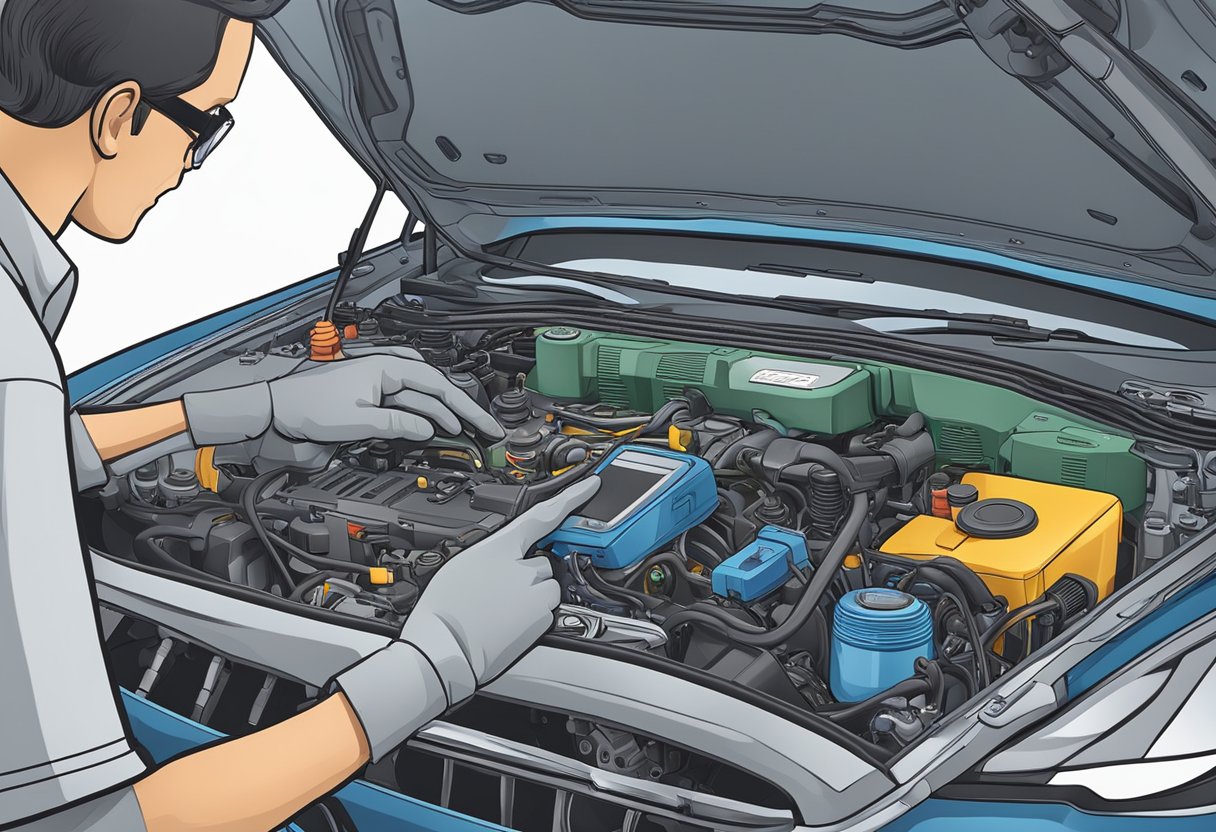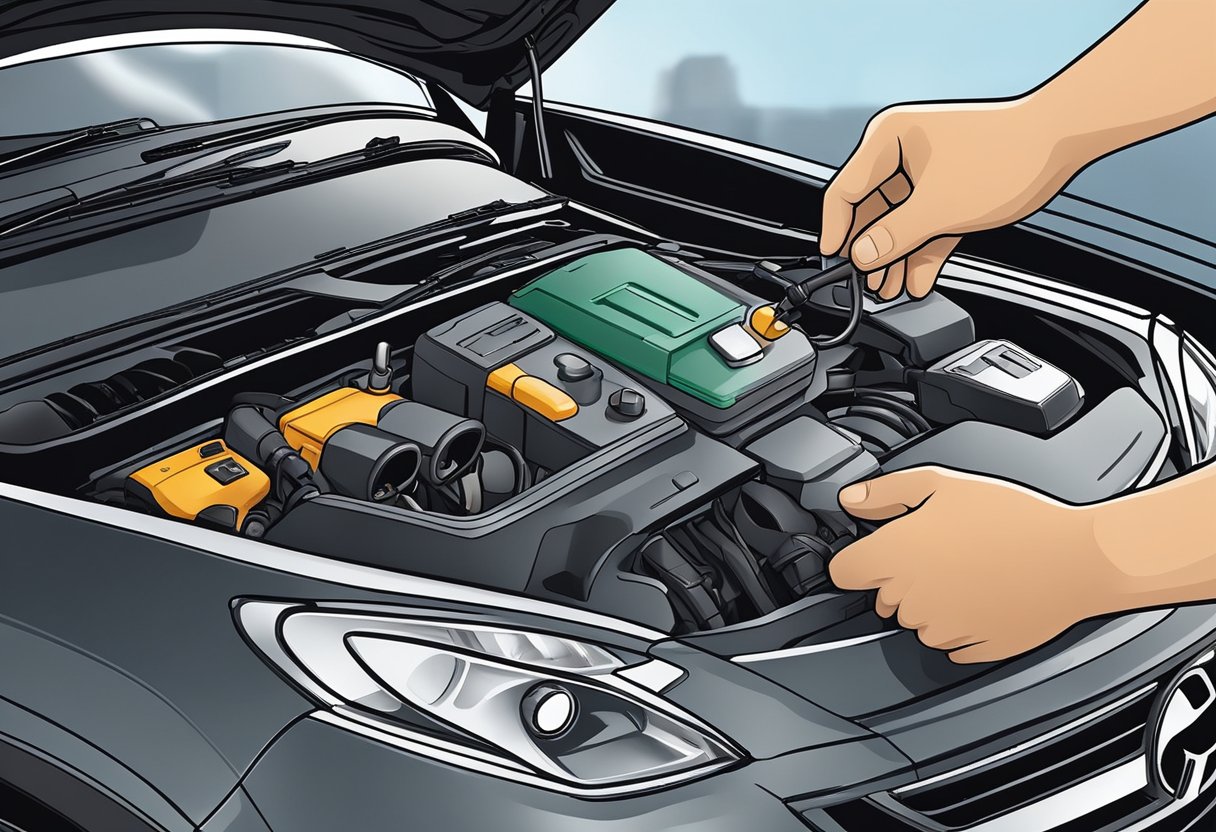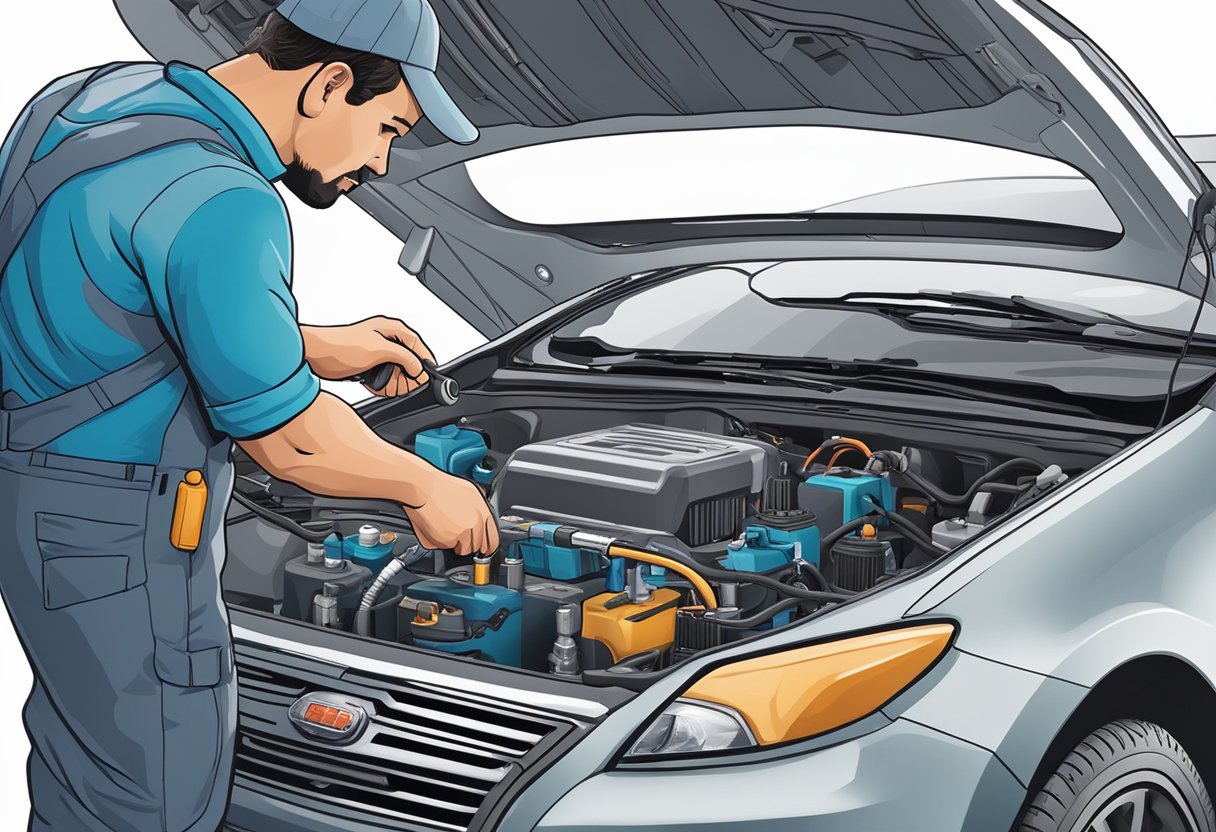If you own a vehicle, chances are you’ve encountered the dreaded check engine light at some point. One of the most common reasons for this warning is the P0446 code, which indicates a malfunction in the evaporative emission control system vent control circuit. This issue can be frustrating to deal with, but it’s important to address it promptly to prevent further damage to your vehicle and ensure it passes emissions tests.
The evaporative emission control system is responsible for capturing and storing fuel vapors that would otherwise escape into the atmosphere. The vent control circuit is a key component of this system, allowing air to flow in and out of the fuel tank as needed. When the circuit malfunctions, it can cause a variety of problems, including decreased fuel efficiency, rough idling, and difficulty starting the engine. If left unaddressed, it can even damage other components of the emission control system.
Understanding the P0446 Code
If your check engine light comes on and you see the P0446 code, it means that there is a malfunction in the Evaporative Emission Control System (EVAP) Vent Control Circuit. This system is responsible for preventing fuel vapors from escaping into the atmosphere, which can be harmful to the environment.
When the P0446 code is triggered, it means that the EVAP system is not functioning properly, and fuel vapors may be escaping. This can lead to reduced fuel economy and increased emissions. It is important to address this issue as soon as possible to avoid further damage to your vehicle and to the environment.
There are several possible causes for the P0446 code, including a faulty vent valve, a damaged charcoal canister, or a problem with the wiring or connections in the EVAP system. It is important to have a qualified mechanic diagnose the issue and make the necessary repairs.
In some cases, the P0446 code may be caused by a loose or damaged gas cap. If this is the case, simply tightening or replacing the gas cap may solve the problem. However, it is important to have the code properly diagnosed to ensure that the issue is fully resolved.
Overall, understanding the P0446 code and addressing it promptly can help ensure that your vehicle is running smoothly and that you are doing your part to protect the environment.
Common Symptoms of the P0446 Code
When the P0446 code is triggered, it can cause a number of symptoms that can be frustrating and inconvenient for drivers. Here are some of the most common symptoms associated with this code:
1. Check Engine Light
The most obvious symptom of the P0446 code is the illumination of the check engine light on your dashboard. This light can be triggered by a number of different issues, but if you see it come on, it’s important to get your vehicle checked out as soon as possible.
2. Difficulty Starting the Engine
Another common symptom of the P0446 code is difficulty starting your engine. This can be caused by a number of different issues, but one of the most common is a malfunctioning EVAP system. If you’re having trouble starting your engine, it’s important to get it checked out right away.
3. Poor Fuel Economy
If your vehicle is experiencing a drop in fuel economy, it could be a sign that the EVAP system is malfunctioning. This system is responsible for capturing and storing fuel vapors, and if it’s not working properly, those vapors can escape, leading to decreased fuel efficiency.
4. Smell of Fuel
If you’re smelling fuel inside your vehicle, it could be a sign that the EVAP system is malfunctioning. This system is designed to prevent fuel vapors from escaping into the atmosphere, but if it’s not working properly, those vapors can build up inside your vehicle, leading to a strong smell of fuel.
5. Failed Emissions Test
If your vehicle fails an emissions test, it could be a sign that the EVAP system is malfunctioning. This system is responsible for capturing and storing fuel vapors, and if it’s not working properly, those vapors can escape into the atmosphere, leading to increased emissions. If your vehicle fails an emissions test, it’s important to get it checked out right away.
Potential Causes of the P0446 Code
If you have a P0446 code, it means that your vehicle’s Evaporative Emission Control System (EVAP) has detected a malfunction in the vent control circuit. This code is usually triggered by a fault in one of the following components:
-
Faulty EVAP Canister Vent Valve: The EVAP canister vent valve is responsible for regulating the flow of fuel vapors from the EVAP system to the engine. If this valve is stuck closed or open, it can cause the P0446 code to appear.
-
Faulty EVAP Canister Vent Solenoid: The EVAP canister vent solenoid is responsible for controlling the flow of fuel vapors from the EVAP system to the engine. If this solenoid is stuck closed or open, it can cause the P0446 code to appear.
-
Broken or Damaged EVAP Canister: The EVAP canister is responsible for storing fuel vapors from the EVAP system. If the canister is broken or damaged, it can cause the P0446 code to appear.
-
Damaged or Disconnected EVAP Hoses: The EVAP hoses are responsible for transporting fuel vapors from the EVAP system to the engine. If these hoses are damaged or disconnected, it can cause the P0446 code to appear.
-
Faulty Fuel Tank Pressure Sensor: The fuel tank pressure sensor is responsible for monitoring the pressure inside the fuel tank. If this sensor is faulty, it can cause the P0446 code to appear.
If you are experiencing the P0446 code, it is important to have your vehicle diagnosed by a qualified mechanic to determine the exact cause of the issue.
Diagnostic Steps for the P0446 Code
If you have a P0446 code, it means that there is a malfunction in the evaporative emission control system vent control circuit. This can be caused by a variety of issues, including a faulty vent valve, a damaged charcoal canister, or a problem with the fuel tank pressure sensor. Here are some diagnostic steps you can take to troubleshoot the problem:
-
Check the fuel cap: A loose or damaged fuel cap can cause the P0446 code to appear. Make sure the fuel cap is tightened properly and in good condition.
-
Inspect the vent valve: The vent valve can become clogged or stuck, causing the P0446 code. Check the valve for any damage or debris that may be preventing it from functioning properly.
-
Check the wiring and connectors: A damaged or corroded wiring harness or connector can cause the P0446 code. Inspect all wiring and connectors related to the evaporative emission control system for any signs of damage.
-
Test the charcoal canister: The charcoal canister can become saturated with fuel over time, causing it to malfunction and trigger the P0446 code. Test the canister to ensure it is functioning properly.
-
Test the fuel tank pressure sensor: The fuel tank pressure sensor is responsible for monitoring the pressure inside the fuel tank. A malfunctioning sensor can cause the P0446 code. Test the sensor to ensure it is functioning properly.
By following these diagnostic steps, you can identify the root cause of the P0446 code and take the necessary steps to fix the problem. Remember to always consult your vehicle’s owner’s manual and follow proper safety procedures when working on your vehicle.
Repair and Troubleshooting
If you have received a P0446 code, it means that there is a problem with your vehicle’s evaporative emission control system vent control circuit. The good news is that this is a common issue, and it can be fixed with a bit of troubleshooting and repair.
The first step in repairing the issue is to check for any loose or damaged connections in the vent control circuit. Inspect all of the hoses and wiring to ensure that they are properly connected and free from damage. If you find any issues, make the necessary repairs and clear the code to see if the problem has been resolved.
If the connections all appear to be in good condition, the next step is to check the vent valve itself. Use a multimeter to test the valve’s resistance, and compare the reading to the manufacturer’s specifications. If the resistance is outside of the acceptable range, the vent valve will need to be replaced.
Another common cause of a P0446 code is a faulty charcoal canister. Inspect the canister for any signs of damage or wear, and replace it if necessary. It is also important to check the fuel cap to ensure that it is properly tightened and sealing correctly.
In some cases, the issue may be caused by a malfunctioning PCM (powertrain control module). If you have exhausted all other troubleshooting options and the code persists, it may be necessary to take your vehicle to a professional mechanic for further diagnosis and repair.
Overall, fixing a P0446 code requires a bit of patience and troubleshooting, but it is a relatively simple issue that can be resolved with the right tools and knowledge. By following these steps and properly maintaining your vehicle’s evaporative emission control system, you can ensure that your vehicle remains in good working condition for years to come.
Preventative Measures and Maintenance Tips
To avoid encountering the P0446 code, it is important to take preventative measures and perform regular maintenance on your vehicle’s evaporative emission control system (EVAP). Here are some tips to help keep your EVAP system in good condition:
-
Check your gas cap regularly: A loose or damaged gas cap can cause the EVAP system to malfunction, triggering the P0446 code. Make sure your gas cap is tightened properly and free of cracks or other damage.
-
Replace worn hoses: Over time, the hoses that make up the EVAP system can become cracked or worn, leading to leaks and triggering the P0446 code. Inspect your hoses regularly and replace any that show signs of wear.
-
Keep your fuel tank at least half full: A low fuel level can cause the EVAP system to malfunction, triggering the P0446 code. Make sure to keep your fuel tank at least half full to avoid this issue.
-
Use high-quality fuel: Poor quality fuel can cause the EVAP system to malfunction, leading to the P0446 code. Use high-quality fuel to help keep your EVAP system in good condition.
By following these tips and performing regular maintenance on your EVAP system, you can help prevent the P0446 code from occurring. If you do encounter the code, be sure to address the issue promptly to avoid further damage to your vehicle.
As an Amazon Associate we earn from qualifying purchases.













